The Center for Spain in America (CSA) promotes advanced study and public awareness in the United States of Spanish art and visual culture, also focusing on the history of the Spanish presence and the influence of Spanish art and culture on North America. CSA cooperates with universities, libraries, archives, museums and other educational or cultural institutions fostering academic excellence in the field of Spanish studies in the United States of America and supporting activities such as symposia, lecture series, exhibitions and publications.
The Center for Spain in America is registered as a not-for-profit organisation in the United States and is legally incorporated in New York State since 2009. Its activity is made possible, in part, by CEEH.
-
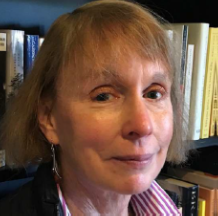 25 January 2025Clark Art Institute, WilliamstownMarjorie Trusted, new Center for Spain in America Fellow at the Clark Art Institute
25 January 2025Clark Art Institute, WilliamstownMarjorie Trusted, new Center for Spain in America Fellow at the Clark Art InstituteMarjorie Trusted (also known as Holly Trusted), who gained her PhD at the University of Cambridge, is Fellow of the Society of Antiquaries and co-founder and co-chair of the Public Statues and Sculpture Association, as well as founding editor of the Sculpture Journal. She was Senior Curator of Sculpture at the Victoria and Albert Museum (V&A) until 2018 and has lectured and published widely on sculpture. She is the author of a catalogue of Spanish sculpture at the V&A (1996), a study of the arts of Iberia and Latin America (2007) and a book on Baroque sculpture in Germany and Central Europe (2022). In addition, she contributed to the exhibition catalogue, The Arts of Latin America 1492–1820 in 2006. As CEEH Research Fellow at the Zurbarán Centre at Durham University she has recently published The Sculptural Works in the Spanish Gallery (2024). During her residence at the Clark until June 6 she will work on a book about the Spanish baroque sculptor Luisa Roldán coauthored with Catherine Hall-van den Elsen.
-
 31 August 2024Cristina Aldrich continues as CSA Curatorial Fellow at the Meadows Museum
31 August 2024Cristina Aldrich continues as CSA Curatorial Fellow at the Meadows MuseumThe Meadows Museum and the Center for Spain in America (CSA) are pleased to extend Cristina Aldrich’s CSA Curatorial Fellowship into a second year. So far her job has included planning, organizing, and executing the upcoming fall exhibition, Unearthing the Legacy of Islamic Spain (15 September 2024 – 5 January 2025), presenting a paper and recent research on Valencian lusterware at the International Committee for Museums and Collections of Decorative Arts and Design (ICDAD) in Lisbon, and giving several talks for docents and the general public on medieval and renaissance works in the Meadows Museum’s collection.
-
 18 September 2023Clark Art Institute, WilliamstownOpen call for the Center for Spain in America Fellowship at the Clark Art Institute
18 September 2023Clark Art Institute, WilliamstownOpen call for the Center for Spain in America Fellowship at the Clark Art InstituteSponsored by the Center for Spain in America, this one-semester fellowship is intended to support the study of all aspects of Spanish art from the early medieval period to the beginning of the twentieth century, as well as the worldwide impact of Spanish art and artists. In addition to research for a publication and/or exhibition on specific artists or periods, projects examining collecting and connoisseurship of Spanish art—particularly in the Americas—and the influence and importance of Spanish art and its reception throughout the world are welcomed.
The deadline to submit applications is October 15.
-
 18 September 2023Meadows Museum, SMUCristina Aldrich, new Center for Spain in America Curatorial Fellow at the Meadows Museum
18 September 2023Meadows Museum, SMUCristina Aldrich, new Center for Spain in America Curatorial Fellow at the Meadows MuseumCristina Aldrich, a doctoral student at the Institute of Fine Arts, New York University, joins the Meadows Museum for the academic year 2023–24 as a new Center for Spain in America (CSA) Curatorial Fellow. The fellowship provides Aldrich—who has received the Shelby White and Leon Levy Travel Grant at the Institute of Fine Arts and both the J.G. White Prize for excellence in Spanish and the Sampson Fine Arts Prize at Cornell University—with the opportunity to gain professional experience in the curatorial department and further her doctoral research on the sacred place of the Virgin Mary in medieval Castilian sculpture thanks to the Meadows Museum’s extensive holdings of Spanish painting and sculpture.
In 1962, Dallas businessman and philanthropist Algur H. Meadows donated his private collection of Spanish paintings, as well as funds to start a museum, to Southern Methodist University. The museum opened to the public in 1965, marking the first step in fulfilling Meadows’s vision to create “a small Prado for Texas.” Today, the Meadows is home to one of the largest and most comprehensive collections of Spanish art outside of Spain. The collection spans from the 10th to the 21st centuries and includes medieval objects, Renaissance and Baroque sculptures, and major paintings by Golden Age and modern masters.
-
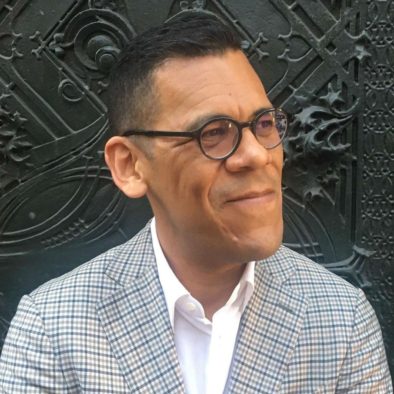 15 September 2023Clark Art Institute, WilliamstownJesús Escobar, new Center for Spain in America Fellow at the Clark Art Institute
15 September 2023Clark Art Institute, WilliamstownJesús Escobar, new Center for Spain in America Fellow at the Clark Art InstituteJesús Escobar is professor of art history at Northwestern University in Chicago. His research explores architecture and urbanism of the early modern Spanish Empire from the vantages of politics, space, and cross-cultural exchange. He is the author of The Plaza Mayor and the Shaping of Baroque Madrid (Cambridge University Press, 2004; Spanish-language edition, Editorial Nerea, 2007) and Habsburg Madrid: Architecture and the Spanish Monarchy (Penn State University Press, 2022), both winners of the Eleanor Tufts Award. Escobar is also editor of the scholarly book series, Buildings, Landscapes, and Societies.
At the Clark, he will work on an article considering the transatlantic itineraries of two accomplished Dominican priests—Antonio de Monroy, a native of Mexico, and Juan Meléndez, a native of Peru—and their individual experiences with architecture in Mexico, Peru, Spain, and Italy. The research is related to a book project with the working title, “Americans Abroad in the Seventeenth Century: People, Buildings, and the Space of Empire.” Focusing on American-born protagonists and using a transatlantic framework, the project deliberately challenges traditional narratives about the transmission of architectural knowledge as a story that begins in Europe and travels west across the Atlantic Ocean.
-
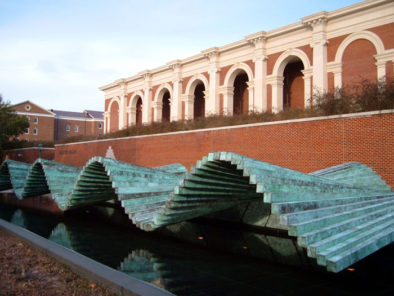 14 November 2022Meadows Museum, SMUPre-doctoral curatorial fellowship underwritten by the CSA
14 November 2022Meadows Museum, SMUPre-doctoral curatorial fellowship underwritten by the CSAThe CSA reinforces its ongoing partnership with the Meadows Museum, SMU, and supports existing scholarship in Spanish art by funding a full-time appointment of one year, beginning in October 2023. The CSA Curatorial Fellow, who must have demonstrated experience and knowledge in this field, will conduct original research toward the completion of their dissertation, actively participating in the organization of special exhibitions. The Fellow will also work closely with curatorial staff on projects as assigned, including acquisitions, permanent collection reinstallations, publications, provenance research, educational programming, etc. The Meadows houses an outstanding collection including masterpieces by El Greco, Velázquez, Ribera, Murillo or Goya and offers through its curatorial department a unique professional and scholarly experience. The Fellow will receive an annual stipend of $40,000 to defray living expenses. Deadline to apply is January 22, 2023, but priority consideration will be given to candidates who apply by November 28, 2022.
More information about the Fellowship
Call for applications -
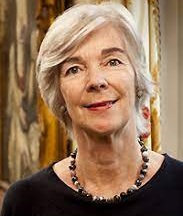 August 2022Special Issue of 19th Century StudiesEssays in Honor of Susan Grace Galassi
August 2022Special Issue of 19th Century StudiesEssays in Honor of Susan Grace GalassiOver the course of her twenty-eight-year career as a curator at The Frick Collection, Susan Grace Galassi has produced critically acclaimed exhibitions and publications focused on European and American artists across centuries. Among her most memorable explorations––many of them undertaken with her longtime collaborator Jonathan Brown––were shows on Goya, Picasso, El Greco and Zurbarán.
Initiated on the occasion of Susan’s retirement from the Frick in 2019, this collection of essays celebrates her career and honors her passion for bringing people together around art and history. The editors and the authors represented in this publication––colleagues, collaborators, and mentees––have had the pleasure of working with Susan and learning from her inspiring example and generous friendship. In the spirit of Susan’s wide-ranging contributions to the field of nineteenth-century art, the essays also reach across temporal and geographic boundaries while addressing attitudes toward the past and tradition; cultural exchange and the experience of traveling or living abroad; collecting and display by later generations. Altogether this Festschrift presents a picture of the artistic and cultural practices that ensued amid increasing global exchange and evolving concepts of national and racial identity in the long nineteenth century.
This Special Section in the 33/2021 issue of 19th Century Studies is made possible by the generosity of the CEEH, the CSA and other anonymous funders.
-
 1 September 2021Clark Art Institute, WilliamstownEdward Payne, new Center for Spain in America Fellow at the Clark Art Institute
1 September 2021Clark Art Institute, WilliamstownEdward Payne, new Center for Spain in America Fellow at the Clark Art InstituteEdward Payne is assistant professor in art history at Aarhus University in Denmark. A specialist of the Mediterranean Baroque, he is writing a monograph entitled Jusepe de Ribera: The Rawness of Nature. He has organized several exhibitions: Visions and Nightmares: Four Centuries of Spanish Drawings (Morgan Library & Museum, 2014); Between Heaven and Hell: The Drawings of Jusepe de Ribera (Meadows Museum, 2017); and Ribera: Art of Violence (Dulwich Picture Gallery, 2018–19). His research has engaged with topics including violence, skin, sensory perceptions, caricature, and ugliness. At the Clark, he will be exploring attitudes and manifestations of violence in early modern Spanish Naples, whether imagined, depicted, or enacted.
-
 14 June 2021Meadows Museum, SMU, DallasMiranda Saylor, new Center for Spain in America Curatorial Fellow at the Meadows Museum
14 June 2021Meadows Museum, SMU, DallasMiranda Saylor, new Center for Spain in America Curatorial Fellow at the Meadows MuseumMiranda Saylor will join the Meadows Museum for the academic years 2021–22 and 2022-2023 as a new Center for Spain in America (CSA) Curatorial Fellow. Thanks to this fellowship she will have the chance to develop new scholarship in Spanish art drawing on the Meadows Museum’s collections and gain professional experience in the curatorial department.
Saylor holds a B.A. in Art History from the University of Pennsylvania, where she graduated magna cum laude. Currently she is a doctoral candidate at the University of California, Los Angeles (UCLA), and her research focuses on early modern Spain, specifically on the influence that seventeenth-century Spanish visionary author Sor María de Ágreda’s biography of the Virgin Mary, Mystical City of God, had on sacred art in the Spanish empire. Saylor has held multiple fellowships, including the UCLA Dickson Fellowship, Fulbright-García Robles Research Fellowship and Penn Museum Curatorial Fellowship. She has assisted on curatorial projects at the University of Pennsylvania Museum of Archaeology and Anthropology, El Museo del Barrio in New York, and the Los Angeles County Museum of Art. At the Meadows Museum, she looks forward to closer examination of the museum’s collection of sacred art and portraiture.
In 1962, Dallas businessman and philanthropist Algur H. Meadows donated his private collection of Spanish paintings, as well as funds to start a museum, to Southern Methodist University. The museum opened to the public in 1965, marking the first step in fulfilling Meadows’s vision to create “a small Prado for Texas.” Today, the Meadows is home to one of the largest and most comprehensive collections of Spanish art outside of Spain. The collection spans from the 10th to the 21st centuries and includes medieval objects, Renaissance and Baroque sculptures, and major paintings by Golden Age and modern masters.
-
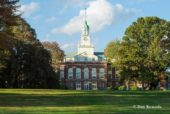 14 June 2021Institute for Advanced Study (IAS), PrincetonOpen call for the John Elliott Membership at the IAS, Princeton
14 June 2021Institute for Advanced Study (IAS), PrincetonOpen call for the John Elliott Membership at the IAS, PrincetonThe John Elliott Membership for the 2022–23 academic year at the School of Historical Studies of the Institute for Advanced Study (IAS), Princeton, underwritten by the CEEH and the CSA, has been announced. The chosen candidate will be able to develop a project at the IAS, an internationally renowned center that provides a matchless environment for reflection, work and study.
-
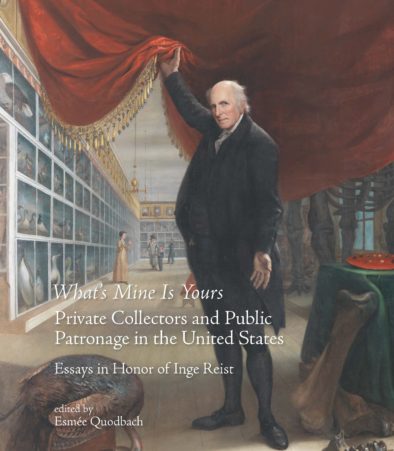 10 June 2021The Frick CollectionEvent in Honor of Inge Reist on the occasion of the newly-released “What’s Mine Is Yours”
10 June 2021The Frick CollectionEvent in Honor of Inge Reist on the occasion of the newly-released “What’s Mine Is Yours”Sir David Cannadine, winner of a Pulitzer Prize, in conversation with Inge Reist, Director Emerita of the Center for the History of Collecting, in celebration of the publication of “What’s Mine is Yours”: Private Collectors and Public Patronage in the United States. Essays in Honor of Inge Reist, jointly published by The Frick Collection, the CEEH y the CSA.
-
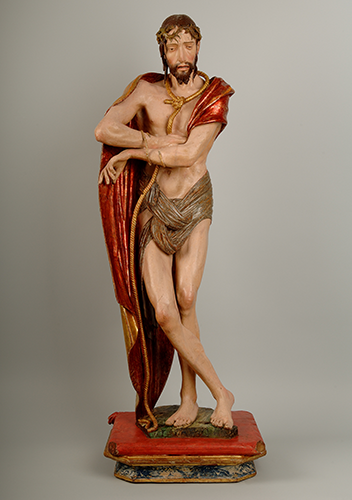 September 2020 – January 2021Alonso Berruguete: First Sculptor of Renaissance Spain opens in Dallas
September 2020 – January 2021Alonso Berruguete: First Sculptor of Renaissance Spain opens in DallasThe Meadows Museum, Dallas, and The National Gallery of Art, Washington, DC, in collaboration with the Museo Nacional de Escultura, Valladolid, present the first major U.S. exhibition dedicated to Spanish sculptor Alonso Berruguete (c. 1488–1561). Originally scheduled to open in March after having been on show in Washington, the exhibition had to be postponed when the COVID-19 pandemic shuttered museums last Spring, and now will be on view through 10 January 2021.
Over the course of his career, which included a period in Italy under the influence of Michelangelo among others, Berruguete emerged as sixteenth-century Spain’s most innovative artist. His work was grounded in the traditions of his native Spain and refined by exposure to the height of the Italian Renaissance; through his natural talent for anatomical precision, dynamic movement, and psychological insight, he revolutionized Spanish art.
While he is known today primarily as a sculptor, during his lifetime Berruguete was widely respected for his work across a variety of media. This exhibition demonstrates the breadth of Berruguete’s practice, displaying six drawings (nearly half of all drawings confidently attributed to him), three paintings (including rare paintings from his Italian period), and twenty-four sculptures, including some of the best examples from the retablo for the church of San Benito in Valladolid, which is widely considered the artist’s magnum opus. A video will also be presented, which brings to life his works in Spain that cannot travel, such as those in the Toledo cathedral. An introductory gallery featuring works by his father—an accomplished painter in his own right—and other Spanish artists of the era will provide a view of the artistic landscape in which Berruguete operated. In the Dallas venue, curated by the Meadows Museum’s Mellon Curatorial Fellow, Wendy Sepponen, this will also include selected works from the Meadows’s permanent collection that will put the artist into dialogue with his Spanish contemporaries.
In tandem with Berruguete’s work, the Meadows is also presenting an exhibition of photographs—originally from the Archivo Mas and now in the holdings of the museum—that provide the rare opportunity to see some of Berruguete’s larger commissions in their original locations. Berruguete Through the Lens: Photographs from a Barcelona Archive includes 31 black-and-white images from the early twentieth century. Used solely for study purposes since their acquisition in 2003, this is the first time selections from the archive have been exhibited publicly.
A fully illustrated catalogue accompanying the exhibition has been sponsored by the Center for Spain in America and the Centro de Estudios Europa Hispánica. The volume, winner of the Eleanor Tufts Book Award 2020, is the second one devoted to the artist by these two institutions, that have already published Son of the Laocoön. Alonso Berruguete and Pagan Antiquity.
-
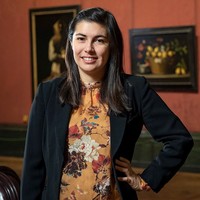 June 2020Meadows Museum, SMU
June 2020Meadows Museum, SMU
Research Fellowship AwardAkemi Luisa Herráez Vossbrink, first Center for Spain in America Curatorial Fellow at the Meadows MuseumThe fellowship has been awarded to Akemi Luisa Herráez Vossbrink, a doctoral candidate at the University of Cambridge, UK, who has focused her research on the Latin American reception of works by Spanish Golden Age painter Francisco de Zurbarán. She will join the Meadows Museum, SMU for a one-year term beginning in September 2020 as the first Center for Spain in America (CSA) Curatorial Fellow. Herráez Vossbrink’s research has appeared in several publications, including the catalogue for the exhibition Zurbarán: Jacob and His Twelve Sons, Paintings from Auckland Castle, which was co-presented by the Meadows Museum and The Frick Collection in New York. Prior to accepting her new role at the Meadows, she served for nearly two years as the CEEH Curatorial Fellow in Spanish Painting at the National Gallery in London.
See her CV
-
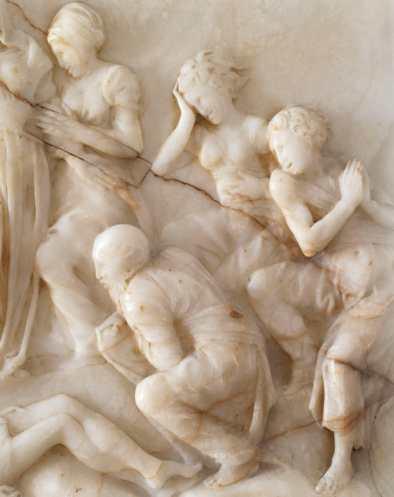 Alonso Berruguete. First Sculptor of Renaissance Spain winner of the Eleanor Tufts Book Award
Alonso Berruguete. First Sculptor of Renaissance Spain winner of the Eleanor Tufts Book AwardThe Eleanor Tufts Book Award was established in 1992 by the American Society for Hispanic Art Historical Studies and recognizes an outstanding English-language book in the area of Spanish or Portuguese art history.
The committee, composed by Jessica Weiss (Metropolitan State University of Denver), Orlando Hernández-Ying (Lone Star College Cy-Fair) and Graciela Kartofel (independent scholar), has honored Alonso Berruguete: First Sculptor of Renaissance Spain by C. D. Dickerson III and Mark McDonald with Manuel Arias Martínez, Daphne Barbour, Jonathan Brown, Richard L. Kagan, Wendy Sepponen and Julia M. Vázquez.
According to the committee, “this important book makes a significant contribution to the study of Alonso Berruguete, and by extension to the understanding of the rippling effects of the Italian Renaissance in sixteenth-century Iberia. In this catalog to the first exhibition devoted to Berruguete’s art held outside of Spain, Dickerson, McDonald, and the volume’s contributors rethink Berruguete’s relationship with sculpture, both as a medium and as an artistic practice. Through the nuanced assessment of Berruguete’s artistic production, the authors investigate Berruguete’s connection to Italian art and to the historically ignored local Castilian artistic tradition. Although organized biographically, the book places Berruguete within a richly nuanced cultural context that intersects with sixteenth-century notions of status and wealth, the role of drawing and print culture, and his legacy as an artist. The text particularly embodies the award criteria of brilliance of insight and clarity of expression; the high quality of the book’s production including a multitude of details, allows for the careful assessment of Berruguete’s sculptures, drawings, and altarpieces.”
Sorolla in America: Friends and Patrons, jointly published by the CSA with the collaboration of the CEEH, was also granted The Eleanor Tufts Book Award in 2017.
Alonso Berruguete: First Sculptor of Renaissance Spain is jointly published by National Gallery of Art, Meadows Museum, SMU, CSA, CEEH and Yale University Press.
-
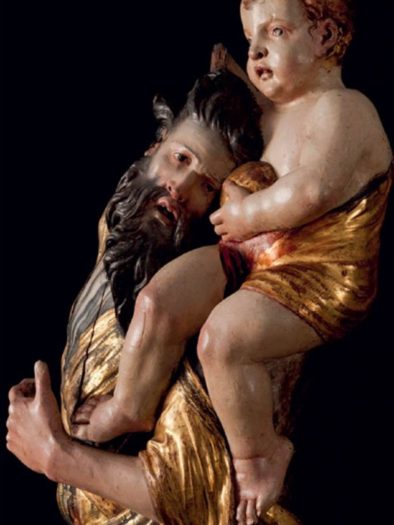 October 2019 – July 2020Exhibitions in Washington and DallasAlonso Berruguete: First Sculptor of Renaissance Spain
October 2019 – July 2020Exhibitions in Washington and DallasAlonso Berruguete: First Sculptor of Renaissance SpainThe National Gallery of Art, Washington D.C, presents Berruguete. First Sculptor of Renaissance Spain (13 October – 17 February 2020), the first major exhibition held outside Spain to celebrate the art of the most important sculptor active on the Iberian Peninsula during the first half of the 16th century. Although unfamiliar to most Americans, and rarely featured in traditional accounts of Renaissance art, Berruguete has been revered as an icon in Spain for centuries. About 45 paintings, sculptures, and works on paper drawn mostly from international collections will be on view, the centerpiece of the exhibition being a selection of his best sculptures—all carved in wood and painted and gilded—from the retablo mayor (high altarpiece) of San Benito el Real in Valladolid, Spain, now in the collection of the city’s Museo Nacional de Escultura. One section of the enormous altarpiece is loosely reconstructed in the exhibition to give visitors some idea of how the sculptures were originally installed. An accompanying film showcases those works by Berruguete that cannot travel, such as his alabaster group of the Transfiguration of Christ that crowns the choir of Toledo cathedral.
The accompanying catalogue has been underwritten by the Centro de Estudios Europa Hispánica and the Center for Spain in America, and co-published by these entities with the National Gallery of Art, Washington, and the Meadows Museum, SMU, Dallas, second venue of this exhibition, curated by C. D. Dickerson III and Mark McDonald and organized in collaboration with the Museo Nacional de Escultura, Valladolid.
-
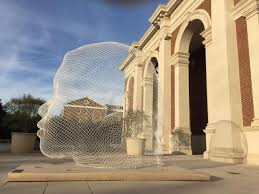 July 2019Pre-doctoral curatorial fellowshipThe CSA sponsors a fellowship at the Meadows Museum, SMU
July 2019Pre-doctoral curatorial fellowshipThe CSA sponsors a fellowship at the Meadows Museum, SMUThe CSA reinforces its ongoing partnership with the Meadows Museum, SMU, and supports existing scholarship in Spanish art by funding a full-time appointment of one year, beginning in September 2020. The selected candidate, who must have demonstrated experience and knowledge in this field, will perform curatorial research and be responsible for projects as assigned. The Meadows houses an outstanding collection including masterpieces by El Greco, Velázquez, Ribera, Murillo or Goya and offers through its curatorial department a unique professional and scholarly experience. As Director Roglán says, “the Meadows Museum takes great pride in training the next generation of curators, art historians and museum professionals.” Through this new fellowship the CSA helps to solidify the Meadows’s position as a premier center of Spanish art research and education in the U.S.
-
 July 2019New call for the CSA fellowship at the Clark Art Institute
July 2019New call for the CSA fellowship at the Clark Art InstituteThe Center for Spain in America (CSA) is pleased to announce a new call for its fellowship at the Clark Art Institute in Williamstown, Massachusetts. Created in 2017, this fellowship is intended to support the study of all aspects of Spanish art from the early medieval period to the beginning of the twentieth century, as well as the worldwide impact of Spanish art and artists.
Applications should be submitted no later than 15 October 2019.
-
 April 2019Clark Art Institute, Williamstown
April 2019Clark Art Institute, Williamstown
Research Fellowship AwardJulie Harris, second Center for Spain in America Fellow at the Clark InstituteThe fellowship has been awarded to Julie Harris, adjunct faculty at Spertus Institute for Jewish Learning and Leadership, Chicago since 2010. Harris holds a degree in Art History from the University of Pennsylvania and a PhD from the University of Pittsburgh. At the Clark, she will be working on a project concerning the function, sources and meaning of ornamental carpet pages in Hebrew Bibles made in Iberia or its cultural sphere ca. 1260–1320. It considers a wide range of cross-cultural scholarship on ornament and the carpet page as well as factors within the realm of Sepharad such as: Hiddur Mitzvah and the self-production of these codices; prayer and the Jewish sensorium; the role of Masora and micrography; and Biblical notions of artistic creativity.
-
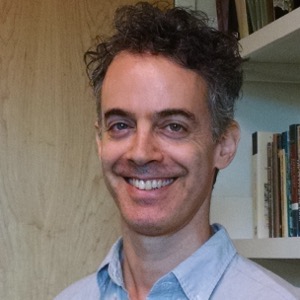 February 2019Institute for Advanced Study, Princeton
February 2019Institute for Advanced Study, Princeton
Research Fellowship AwardDaniel Bernardo Hershenzon is awarded the John H. Elliott Membership at the Institute for Advanced Study (IAS), PrincetonDaniel Bernardo Hershenzon earned his BA in History and Philosophy at Tel Aviv University and his PhD in History at the University of Michigan. Before joining the Department of Literatures, Cultures, and Languages at Connecticut University as associate profesor he was visiting scholar NYU and Columbia University.
At the Institute for Advanced Study, Hershenzon will be working on a new book project that studies the circulation of Jewish, Muslim, and Christian religious objects—Qurans and bibles, prayer shawls, crosses, images of Christ and the Virgin Mary, and relics—in the early modern Mediterranean.
-
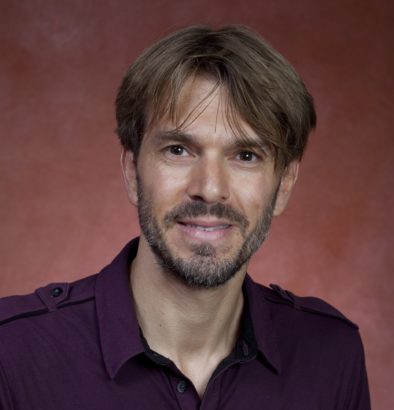 May 2018Clark Art Institute, Williamstown
May 2018Clark Art Institute, Williamstown
Research Fellowship AwardDoron Bauer is awarded the first fellowship at the Clark Art InstituteThe inaugural Center for Spain in America Fellow at the Clark, Doron Bauer, is an assistant professor of medieval and Islamic art history at Florida State University. He is the author of Romanesque Sculpture: Towards an Anti-Iconography (forthcoming) and Art in the Kingdom of Majorca: An Anthology of Sources (forthcoming).
At the Clark, he will be working on Cities Upon Cities: The Reconquista and the Colonization of the Aesthetic, a book that examines the Occidentalization-Christianization of Islamic cities in Iberia and Africa after the Christian conquest as manifested in changes to the cities’ public monuments, private spaces, urban fabric, and material culture.
-
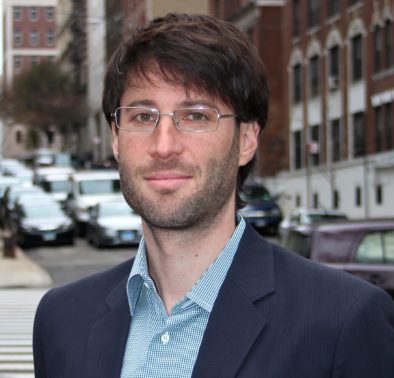 February 2018Institute for Advanced Study, Princeton
February 2018Institute for Advanced Study, Princeton
Research Fellowship AwardSeth Kimmel is awarded the John H. Elliott Membership at the Institute for Advanced Study (IAS), PrincetonSeth Kimmel, an assistant professor at Columbia who earned his PhD in Comparative Literature from the University of California, Berkeley, has been awarded the new John H. Elliott Membership, underwitten by the CEEH and the CSA. At the IAS Kimmel will be working on a book project that studies the relationship between cosmography and bibliography in the early modern period.
-
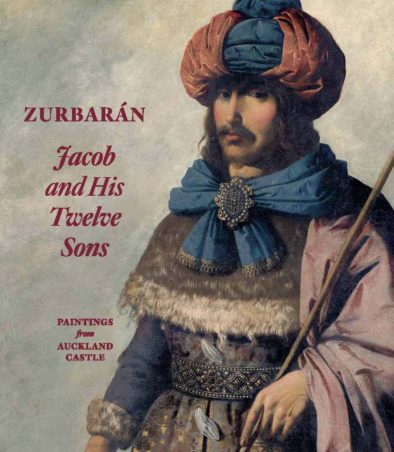 September 2017 - January 2018Exhibitions in Dallas, New York and JerusalemZurbarán: Jacob and His Twelve Sons, Paintings from Auckland Castle
September 2017 - January 2018Exhibitions in Dallas, New York and JerusalemZurbarán: Jacob and His Twelve Sons, Paintings from Auckland CastleA biblical text inspired Francisco de Zurbarán (1598-1664) to create in the 1640s one of his most important and monumental series: Jacob and His Twelve Sons. Coinciding with Zurbarán’s artistic maturity, he had a workshop in Seville producing works destined for the Spanish territories in the Americas. In fact, the Jacob series is clearly related to the New World, since at least two copies reside in the cities of Puebla (Mexico) and Lima (Peru). This connection may help us to understand the realization of a series such as this, which remains a rare subject in Christian iconography.
If the series itself is extraordinary because of its quality and rarity, its provenance is also of great interest. Although it is believed that these works were destined for the Americas, there is evidence that they were in England in the eighteenth century. They have been housed at Auckland Castle since 1756, the year they were purchased at auction in London by Richard Trevor, the fifty-fourth Bishop of Durham. Trevor ran out of funds before being able to purchase Benjamin, so he had a copy made by British artist Arthur Pond (1705-1798) in order to have the entire group represented at his residence. The original Benjamin has remained in a private collection ever since, but it will join its “brothers” in a historic reunion for this exhibition.
This exhibition marks the first time these precious holdings will be presented in America and Israel, and only the second time in history that they leave Auckland Castle. After its presentation at the Meadows Museum the works will be featured at The Frick Collection in New York and at The Israel Museum in Jerusalem, the last venue for this exhibition, co-organized by the Meadows Museum, SMU, The Frick Collection and Auckland Castle, in association with the Kimbell Art Museum. The exhibition catalogue has been underwritten by the Centro de Estudios Europa Hispánica and the Center for Spain in America.
-
 September 2017Research giftThe CSA sponsors a fellowship at the Clark Art Institute
September 2017Research giftThe CSA sponsors a fellowship at the Clark Art InstituteThe Center for Spain in America (CSA) establishes this association with the prestigious Clark Art Institute at Williamstown, Massachusetts, providing scholars and museum curators with the opportunity to develop their research projects in a wonderful academic environment. These fellowships are part of a larger program of collaboration with other entities in America that strives to advance the understanding and appreciation of Spanish art in the US, thus fostering excellence in this field of study.
-
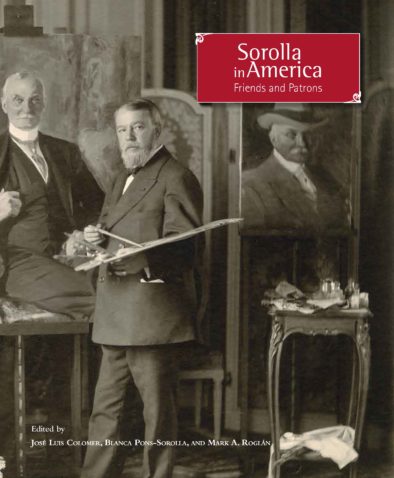 February 2017Sorolla in America winner of the Eleanor Tufts Award 2017
February 2017Sorolla in America winner of the Eleanor Tufts Award 2017The committee, composed by Adam Jasienski (Meadows School of the Arts, Southern Methodist University), Niria Leyva-Gutiérrez (Long Island University Post) and Jordana Mendelson (New York University), unanimously chose to honor Sorolla in America: Friends and Patrons, with the Eleanor Tuft Award 2017, that recognizes an outstanding English-language book in the area of Spanish or Portuguese art history.
This volume, jointly published by the Meadows Museum, the CSA and the Fundación Museo Sorolla, excelled in the award categories of “thoroughness of research,” “significance of findings,” and “clarity of expression.” According to the committee, “the scholarly rigor and attention to detail that characterize this book, and the logic with which the individual essays are organized, make the publication an exemplum of what a museum-based academic publication can and should do. Furthermore, the high quality of the book’s production ensures that, for years to come, it will remain a touchstone for scholarship on Sorolla, the transatlantic visual culture of the turn of the twentieth century, and the history of collecting writ large”.
Sorolla in America was edited by José Luis Colomer, Blanca Pons-Sorolla, and Mark A. Roglán.
-
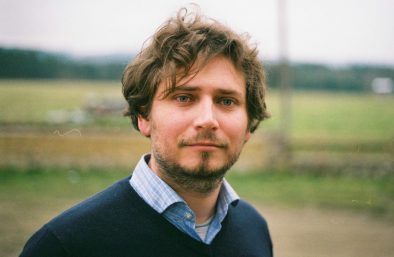 May 2016Institute for Advanced Study, Princeton
May 2016Institute for Advanced Study, Princeton
Research Fellowship AwardThe inaugural John H. Elliott Membership sponsored by the Center for Spain in America at the School of Historical Studies has been awarded to Dr. Fabien MontcherAt the IAS, Fabien Montcher will be finishing a book, tentatively entitled Scholarship and the Making of Politics in Early Modern Empires: The Iberian Routes of the Republic of Letters. This work explores the ways in which early modern scholarship contributed to the foundations of modern state politics between the Late Renaissance and the Enlightenment.
As a historian who works on the social history of ideas–a specialty that builds on political theory, intellectual history, the history of intercultural relations, libraries, paperwork and information–Fabien brings together the history of the Iberian Empires, both Spanish and Portuguese, and the history of the Republic of Letters by examining the interconnected configurations of global communities of knowledge along with early modern state information systems.
His complete CV in academia.edu
-
 September 2015Research giftThe Center for Spain in Americacreates the John Elliott Membership in the School of Historical Studies at the Institute for Advanced Study, Princeton
September 2015Research giftThe Center for Spain in Americacreates the John Elliott Membership in the School of Historical Studies at the Institute for Advanced Study, PrincetonThis gift is meant to encourage research into the history and culture of Early Modern peninsular Spain from the XV century to the beginning of the XIX century. Applicants will be selected by the Faculty based on their individual excellence, the quality of the research proposal, and the value of the proposed research to the field as a whole. Distinguished visiting scholars will be appointed for full-year or one-term memberships, during which they will be provided with an optimal environment conducive to focused study.
The new Membership wishes to honor Sir John Elliott’s fundamental contribution to our knowledge of Spain’s Golden Age and the Hispanic world. His international academic career includes 17 years as a member of the Faculty of the School of Historical Studies at the Institute for Advanced Study.
-
 October 4, 2011 through January 8, 2012The Frick Collection, New York
October 4, 2011 through January 8, 2012The Frick Collection, New York
ExhibitionPicasso’s Drawings, 1890–1921: Reinventing TraditionThe Frick Collection, New York, and the National Gallery of Art, Washington D.C., have co-organized an exhibition on Picasso’s drawings, from the precocious academic exercises of his youth in the 1890s to the virtuoso classical works of the early 1920s. The exhibition features loans from important public and private collections in Europe and the United States and is accompanied by a full-length catalogue of the same name.
Organized by Susan Grace Galassi, Senior Curator (The Frick Collection), and Marilyn McCully, Picasso expert, in conjunction with Andrew Robison, Mellon Senior Curator of Prints and Drawings, (National Gallery of Washington).
The accompanying catalogue is underwritten by the Center for Spain in America and The Christian Humann Foundation.
Funding for the exhibition in New York is provided, among others, by Bill and Donna Acquavella, the Stavros Niarchos Foundation, and Melvin R. Seiden.
Press reviews
The New York Observer
The New York Times
Bloomberg
The Wall Street Journal -
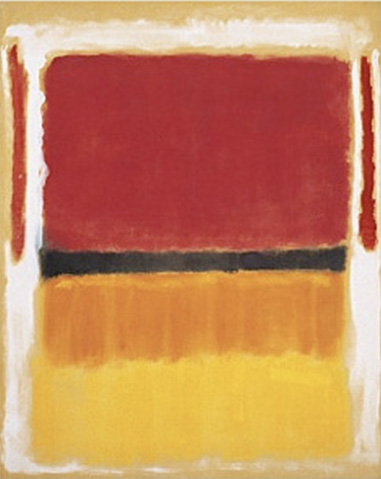 April 1 - 2, 2011Institute of Fine Arts, New York University
April 1 - 2, 2011Institute of Fine Arts, New York University
SymposiumContemporary Transatlantic Dialogues: Art History, Criticism, and Exhibition Practices in Spain and the United StatesCoord. by Robert Lubar (Institute of Fine Arts, NYU) and Dolores Jiménez-Blanco (Universidad Complutense de Madrid) -
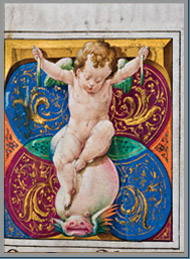 January 23 through April 24, 2011The Meadows Museum at Southern Methodist University, Dallas, Texas
January 23 through April 24, 2011The Meadows Museum at Southern Methodist University, Dallas, Texas
ExhibitionThe Lost Manuscripts from the Sistine Chapel. An Epic Journey from Rome to ToledoThe exhibition displays a group of illuminated manuscripts which come from the Sacristy of the Sistine Chapel. They were dispersed during the French occupation of Rome and acquired by Cardinal Francisco de Lorenzana, who as Archbishop of Toledo donated them to the cathedral library; they have remained there till the present day. For the first time this collection of great art-historical value has been catalogued and studied, and is presented with liturgical objects belonging to the Cardinal and other items that situate the collection in its original context.
The Meadows Museum is the only venue of the exhibition outside of Spain after its display in the Biblioteca Nacional in Madrid (October 20, 2010 through January 9, 2011)
Exhibition curators: Elena De Laurentiis and Emilia Anna Talamo
Organized by: Biblioteca Nacional de España, Madrid; Centro de Estudios Europa Hispánica, Madrid; Cabildo de la Catedral de Toledo; Meadows Museum at Southern Methodist University, Dallas; Center for Spain in America.
-
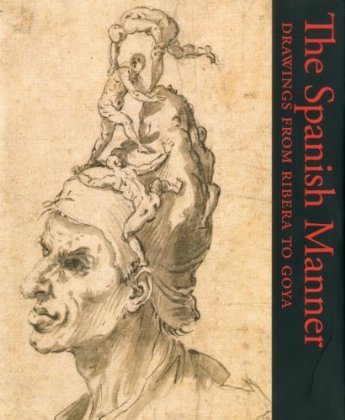 October 5, 2010, through January 9, 2011The Frick Collection, Nueva York
October 5, 2010, through January 9, 2011The Frick Collection, Nueva York
ExhibitionThe Spanish Manner: Drawings from Ribera to GoyaThe dazzling idiosyncrasy of great Spanish draftsmen from the seventeenth through the nineteenth century will be the subject of an exhibition featuring more than fifty works from public and private collections in the Northeast of the US, among them The Metropolitan Museum of Art, The Hispanic Society of America, The Morgan Library & Museum, the Princeton University Art Museum, and the Philadelphia Museum of Art.
The exhibition is organized by Jonathan Brown, Carroll and Milton Petrie Professor of Fine Arts, New York University; Lisa A. Banner, independent scholar; and Susan Grace Galassi, Senior Curator at The Frick Collection. It will be accompanied by a fully illustrated catalogue with entries by the show’s organizers and by Reva Wolf, Professor of Art History, State University at New Paltz, and by Andrew Schulz, Associate Professor of Art History and Department Head at the University of Oregon.
The accompanying catalogue is sponsored by the Center for Spain in America.
The exhibition is made possible, in part, by the David L. Klein Jr. Foundation and the Samuel H. Kress Foundation. http://www.frick.org/exhibitions/future.htm
Press reviews
-
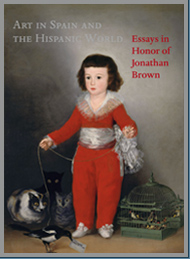 September 27, 2010Institute of Fine Arts, New York University
September 27, 2010Institute of Fine Arts, New York University
Book presentationArt in Spain and the Hispanic World: Essays in Honor of Jonathan Browned. by Sarah Schroth
Paul Holberton Publishing, London, in association with Center for Spain in AmericaCSA sponsors the publication of this Festschrift for Jonathan Brown, the fruit of the symposium that was held at the Frick Collection and the Institute of Fine Arts in New York in May 2008, at the initiative of a group of close colleagues and former students wishing to celebrate his scholarship and his generosity as a teacher. This series of essays by 15 scholars whose work and methods are indebted to his studies provide an eloquent testimony to how widespread Brown’s influence has been on recent generations of historians of the art of the Hispanic world.
Press reviews
